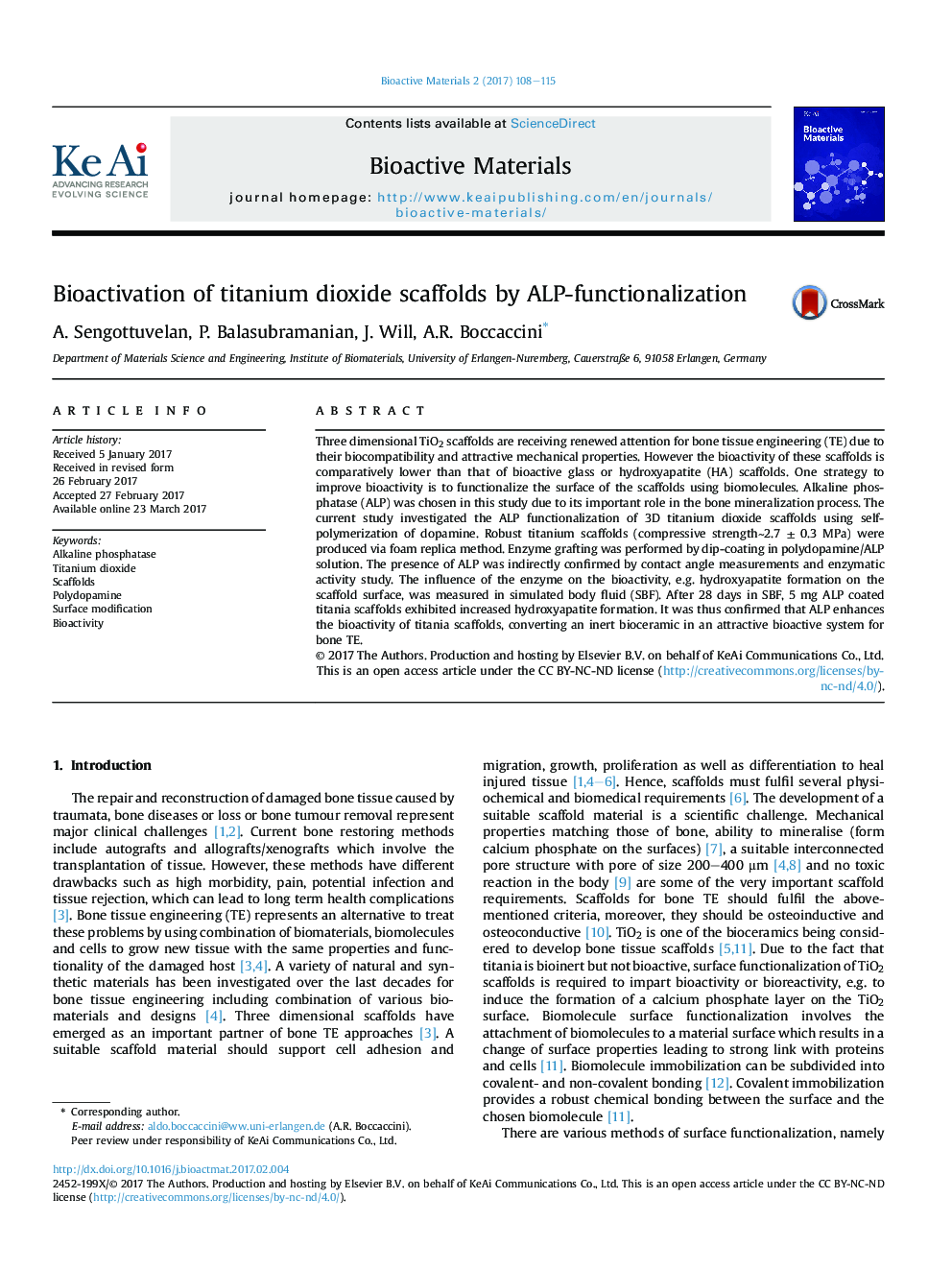| کد مقاله | کد نشریه | سال انتشار | مقاله انگلیسی | نسخه تمام متن |
|---|---|---|---|---|
| 5431475 | 1398021 | 2017 | 8 صفحه PDF | دانلود رایگان |

- TiO2 scaffolds of competent mechanical properties fabricated by foam replica method.
- Bioactivity enhanced by functionalization with alkaline phosphatase (ALP).
- ALP functionalization achieved by self-polymerization of dopamine.
Three dimensional TiO2 scaffolds are receiving renewed attention for bone tissue engineering (TE) due to their biocompatibility and attractive mechanical properties. However the bioactivity of these scaffolds is comparatively lower than that of bioactive glass or hydroxyapatite (HA) scaffolds. One strategy to improve bioactivity is to functionalize the surface of the scaffolds using biomolecules. Alkaline phosphatase (ALP) was chosen in this study due to its important role in the bone mineralization process. The current study investigated the ALP functionalization of 3D titanium dioxide scaffolds using self-polymerization of dopamine. Robust titanium scaffolds (compressive strengthâ¼2.7 ± 0.3 MPa) were produced via foam replica method. Enzyme grafting was performed by dip-coating in polydopamine/ALP solution. The presence of ALP was indirectly confirmed by contact angle measurements and enzymatic activity study. The influence of the enzyme on the bioactivity, e.g. hydroxyapatite formation on the scaffold surface, was measured in simulated body fluid (SBF). After 28 days in SBF, 5 mg ALP coated titania scaffolds exhibited increased hydroxyapatite formation. It was thus confirmed that ALP enhances the bioactivity of titania scaffolds, converting an inert bioceramic in an attractive bioactive system for bone TE.
145
Journal: Bioactive Materials - Volume 2, Issue 2, June 2017, Pages 108-115